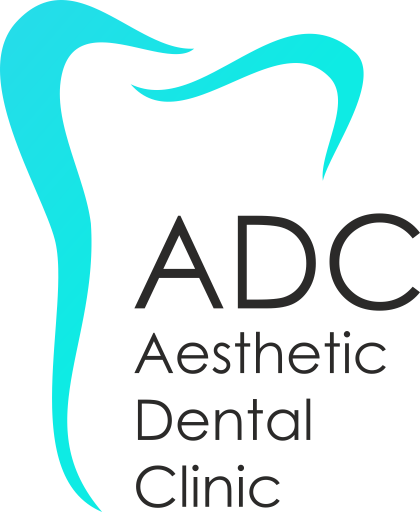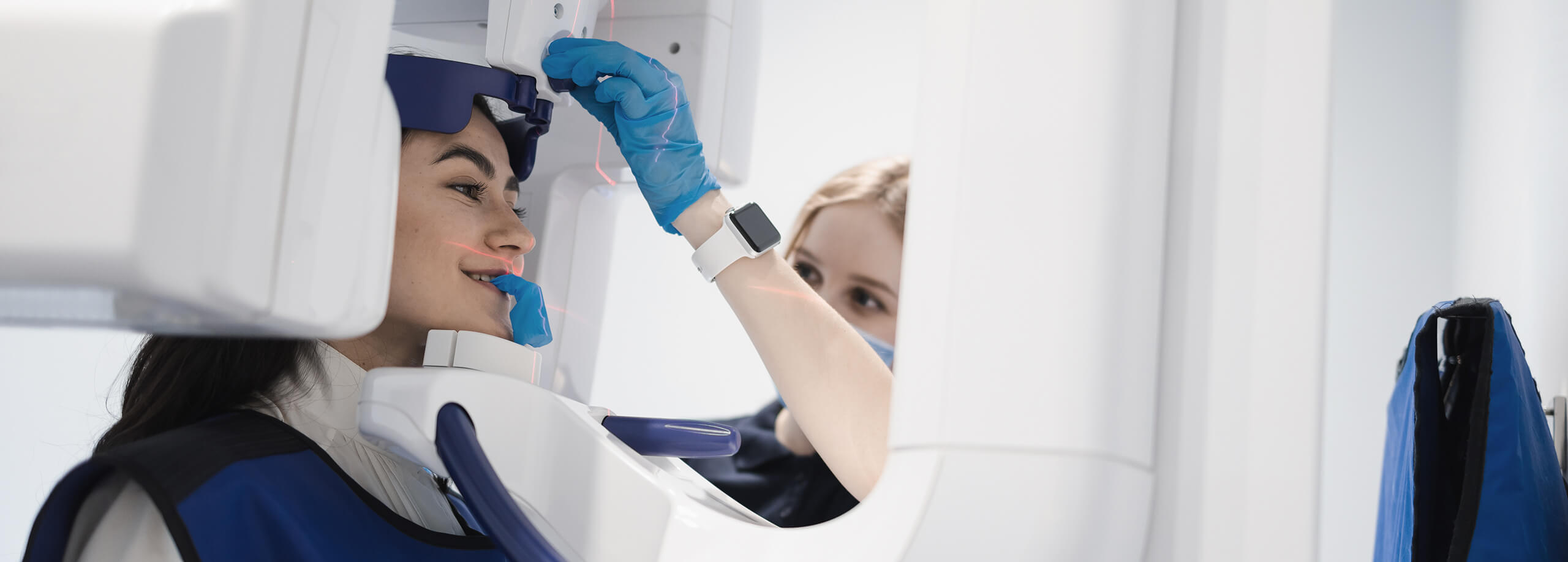What is a Dental Panoramic X-ray?
A panoramic dental x-ray is a two-dimensional (2D) dental x-ray that captures the entire mouth in a single image, including the teeth, of the upper and lower jaw, surrounding structures and tissues.
It uses a very small dose of ionizing radiation to capture the entire mouth in one image. It is commonly used by dentists and oral surgeons in daily practice and can be used for treatment planning of dentures, splints, extractions and implants.
This exam requires little to no special preparation.
Unlike a traditional intraoral x-ray where the film/X-ray detector is placed inside the mouth, the film for a panoramic x-ray is contained inside the machine.
How is a Panoramic X-ray performed?
First, you will be in the center of the panoramic unit where the dentist will carefully position and secure your head.
The unit can be adjusted to accommodate a patient standing or sitting in a wheelchair.
A bite-blocker is then placed in your mouth to ensure proper alignment of the teeth. Correct placement of teeth and head is important to obtain a clear image.
You will be asked to remain very still while the rotating arm travels in a semicircle around the circumference of your head and images are taken. This can usually take anywhere from 12 to 30 seconds.
What will I experience during and after the procedure?
A panoramic X-ray is painless, quick and easy. It may be recommended via intraoral x-ray in patients who have a sensitive gag reflex.
Preparation for the Dental Panoramic X-ray
A panoramic radiograph does not require special preparation.
You may be asked to wear a lead apron as a safety precaution to protect the rest of your body from any radiation exposure that may be scattered by the panoramic X-ray beam.
You may also be asked to remove your jewelry from the imaged area, eye glasses, and any metal objects that may interfere with the X-ray images.
Women should always tell their dentist or oral surgeon if there is a possibility that they may be pregnant. Many imaging tests are not done during pregnancy to avoid exposing the fetus to radiation.
If an X-ray is necessary, precautions will be taken to minimize the baby’s exposure to radiation.
What are the benefits versus the risks of the Panoramic X-ray?
Benefits
- No radiation remains in your body after an X-ray exam.
- X-rays usually have no side effects in the standard diagnostic range for this test.
- Panoramic dental x-rays can provide valuable diagnostic information to guide your dentist or oral surgeon in the treatment of your dental and oral disease.
- Panoramic radiographs can be used for very young children as the film does not need to be placed inside the mouth.
Risks
- Women should always tell their dentist or oral surgeon if there is a possibility that they may be pregnant.
What are the limitations of Panoramic Radiography?
A panoramic radiograph does not provide accurate and detailed information about each individual tooth or soft tissues such as muscles.
It is generally used as an initial assessment of the bones and teeth. Because your mouth is curved, the panoramic x-ray can sometimes produce a slightly blurry image where accurate measurements of your teeth and jaw are not possible. If your dentist or surgeon needs more information, a computed tomography (CT) or magnetic resonance imaging (MRI) scan may be ordered.
What are the most common uses of the Panoramic X-ray?
The panoramic radiograph is a routine examination by dentists and oral surgeons in daily practice and is an important diagnostic tool.
It covers a wider area than a conventional intraoral radiograph and therefore provides valuable information about the maxillary sinuses, tooth position and other bony abnormalities. This test is also used to plan treatment for dentures, splints, extractions and implants.
A panoramic X-ray can also reveal dental and medical problems such as:
- advanced periodontal disease
- jawbone cyst
- jaw tumors and mouth cancer
- impacted teeth including wisdom teeth
- jaw disorders (also known as temporomandibular joint or TMJ disorders)
- sinusitis
- lack of permanent teeth
- supernumerary teeth
- the position of the wisdom teeth and especially in relation to sensitive anatomical molecules
- the dental age of the children
- caries in areas that are not visible to the naked eye
- the existence of caries under previous fillings
- periapical inflammation and granulomas
- the position of dental implants
- the health or not of the bone around the implants
- the quality and health of regenerated bone
- the adjustment of fillings and crowns around the teeth





